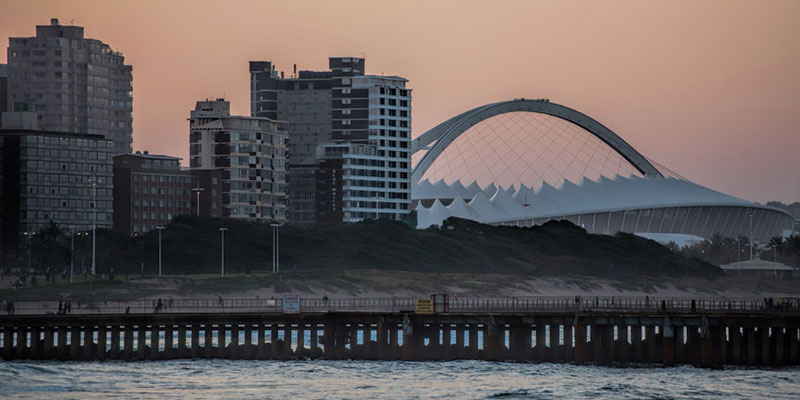Durban has a modern skyline, but a water and wastewater infrastructure crisis is slowing progress in reaching development goals.
How can decentralized treatment help the South African port city meet its water management goals?
Durban, South Africa, and its surrounding towns are known collectively as “eThekwini” in the Zulu language. Durban is an active port city on the Indian Ocean in South Africa’s KwaZulu-Natal province. Despite riots in July, Durban remains committed to becoming the most livable city in Africa by 2030, with an emphasis on planning for resilience with water, sanitation, transportation, public parks, and a Durban Green Corridor project to steward the city’s rivers and waterways.
Like much of the wastewater treatment infrastructure in South Africa, Durban’s aging water and sanitation infrastructure is struggling to deliver basic water services to a growing population.
When planning water infrastructure improvements, Durban has taken a regional approach with participation from all segments of society, from stakeholders to urban poor. And it has looked beyond the water sector to manage its water by incorporating forest management and urban planning to mitigate climate shocks.
Aging Water Infrastructure
But with all of its forward-thinking, eThekwini is still tied to an aging system of pipes, pumps, and wastewater treatment works. Although more than US$425 million has been spent recently on infrastructure improvements — 2.1 billion rand for pipe replacement, 2.1 billion rand toward large aqueducts, and 2 billion rand toward water treatment upgrades — the area’s water and sanitation infrastructure is still not up to handling a growing population.
The infrastructure has deteriorated further as a result of illegal connections and improper disposal of objects. Reports of bursting suburban pipes, faulty pumps, failures at wastewater treatment plants, and untreated sewage flowing into the uMbilo River have become commonplace. While much of the water service interruption is due to age-related problems, vandalism and power shortages also have contributed.
In response, the municipality has announced a 3-year infrastructure levy increase of 1.50 rand/kL for drinking water and 1.50 rand/kL for sewage service to raise a billion rand (approximately US$67 million) to upgrade water and sanitation infrastructure, sparking criticism from ratepayers.
Water Infrastructure Solutions
When replacing water and wastewater infrastructure, new approaches have the potential to both save money and increase resilience. Often, 75% of wastewater treatment plant construction costs go toward collection and delivery pipelines. If existing infrastructure is replaced by a decentralized system, a large amount of money can be saved.
Placing small-scale, modular plants around a municipal service area eliminates the need for long pipes to a central facility. With neighborhoods treating and reusing their own wastewater, the burden on remaining central plants is reduced. The plants are monitored remotely and maintenance is quick and seamless – an individual plant can be quickly repaired without jeopardizing other plants in the system.
Modular Plants for Decentralized Treatment
Fluence’s Aspiral™ modular wastewater treatment units use membrane aerated biofilm reactor (MABR) technology to produce water that meets the world’s toughest quality standards for reuse, including China’s Class 1A and California’s Title 22 regulatory frameworks. The units provide the benefits of biological treatment without pressurized air for significant reductions in energy requirements.
Aspiral™ plants come in standard shipping containers for easy transportation, and can be used individually or in tandem depending on how much water needs to be treated. Especially important in urban environments, Aspiral™ plants do not smell or make noise, and take up minimal space.
MABR also is available for retrofitting legacy activated sludge plants. With SUBRE, MABR units are submerged in existing wastewater treatment plant chambers to upgrade capacity on the same footprint without new construction.
eThekwini has embraced a number of forward-thinking strategies to manage its water future, and many revolutionary solutions have the potential to help it move forward. Contact our experts to discuss how we can help improve water infrastructure in tight urban quarters.

